Simple Materials, Complex Ideas
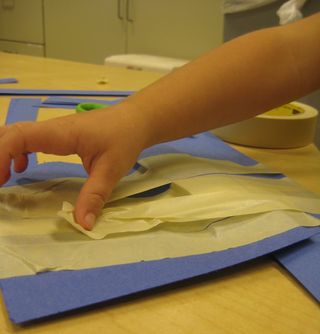
By Caroline Wolfe and Lauren Adams, Preschool teachers
As educators, we believe that young children have the right to use a variety of materials that facilitate opportunities for exploration, experimentation, discovery and creation.
The first studio invitation of the school year was offering the children two simple materials, blue construction paper and masking tape, with an open-ended invitation to discover what might happen when these two materials connect with one another. This question inherently conveys to the children that we know they are competent, full of ideas that we all benefit from hearing. Although these materials are quite ordinary, this provocation (or invitation) offers a window into children's thinking and imagination. They can see a world of possibilties that live inside of these simple materials. As they manipulate the materials and see how others use the materials, it opens up many avenues for complex ideas.
“Materials stimulate the senses, which respond by developing networks in the brain that in time enable us . . . to build relationships among complex ideas. Materials educate the hand, which drives language, movement, attention, planning and scores of other brain functions. The combination of hand and materials is essential to virtually every endeavor.” – Ann Lewin-Benham
Teacher-Researcher Wonderings:
- How will deliberate, thoughtful exposure to materials support children to use these materials to express their complex ideas?
- Will seeing the many ideas of others inspire new ideas within the self to explore and test a different idea?
- Given the time to explore, in what ways will children discover the properties of masking tape and paper and their possibilities together? How will these discoveries then translate and influence them when using other, perhaps more complex, materials?
It's easy. I made a 'X'. – G.
It goes this way [opening her arms up like a 'Y']. -M.
I cut it. . . . I made a airport. -K.
It's a big one! . . .Now I'm adding another one. I'm making a big line. -B.
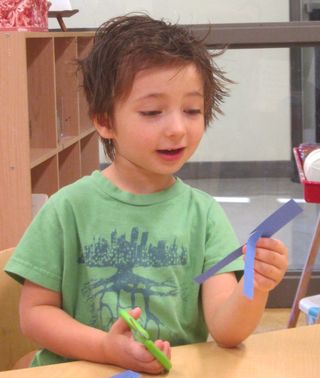
I used paper and scissors and tape and I made a grown-up [looking at the two 'legs' he cut]. -S.
I wanted to do that; what [he] did. -B.
I'm making a toy. . . It goes around, and around, and around, and around, and around. . . -L.
I can cut it, too. . . This is what I made [pointing to each of her pieces of tape]. -I.
How would you articulate the complex opportunity for these young children that lives inside this simple invitation?
What is the role of the adult in bringing its meaning to light?


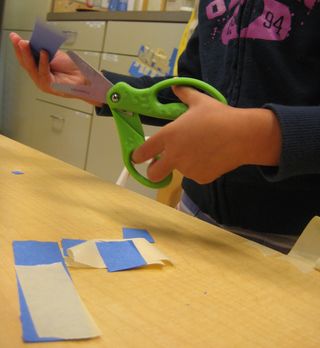
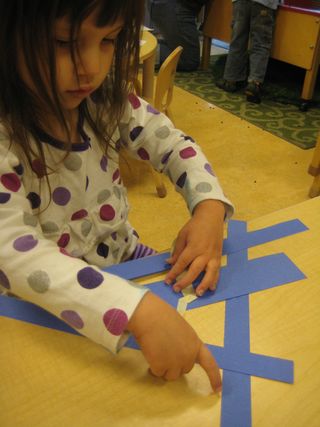
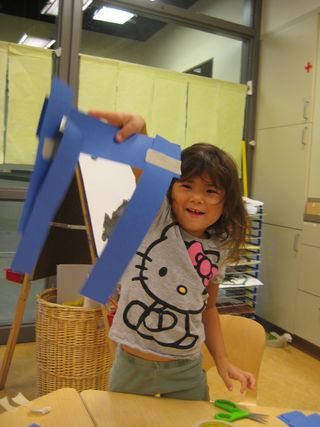
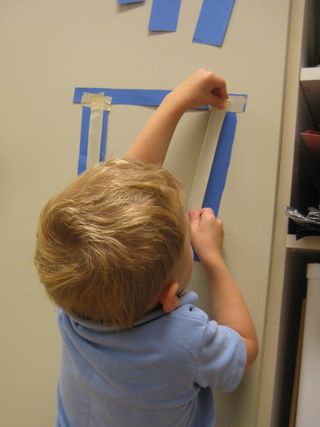
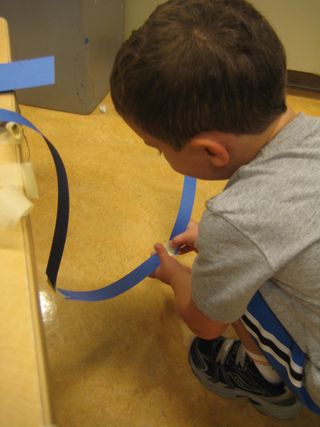
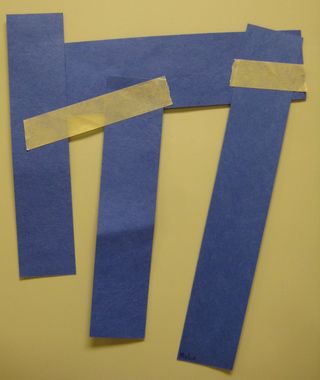
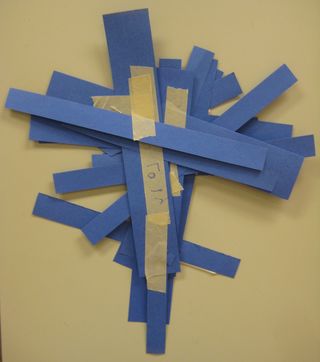
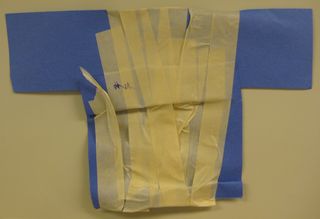
Simple materials are the best, they help us have clarity. For young children the wrapping and dexterity needed to work with longer and longer strips of tape is very challenging and in itself a great brain exercise.
The adult may help describe processes but should avoid putting their own meaning on it. By being patient and respectful listeners we find the children’s own meaning.
I love some of those washi tapes that are coloured, you can rip easily, I love what appears to be a 2D provocation which the children turn into a 3D experience as they get themselves caught up with their creation. It is so much kinder to my creative engineers, architects and multi-dimensional workers! I can’t wait to get you my carnivorous plants online! They were SO creative, just paper, felt, scissors, tape and a few beads….
Simple things can be very creative and this prove to me that it`s not always good and necessary to be complicate activity to wake up somebody`s imagination . Simple invitations can be transformed in to a powerful and colorful flight in a very normal/ simple way. Thank you for that.